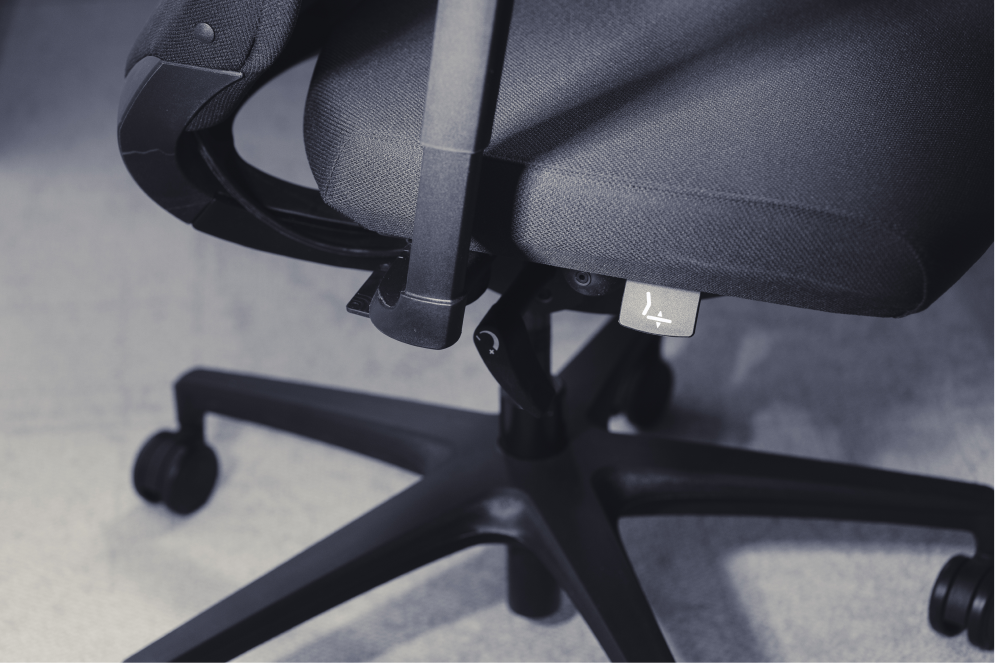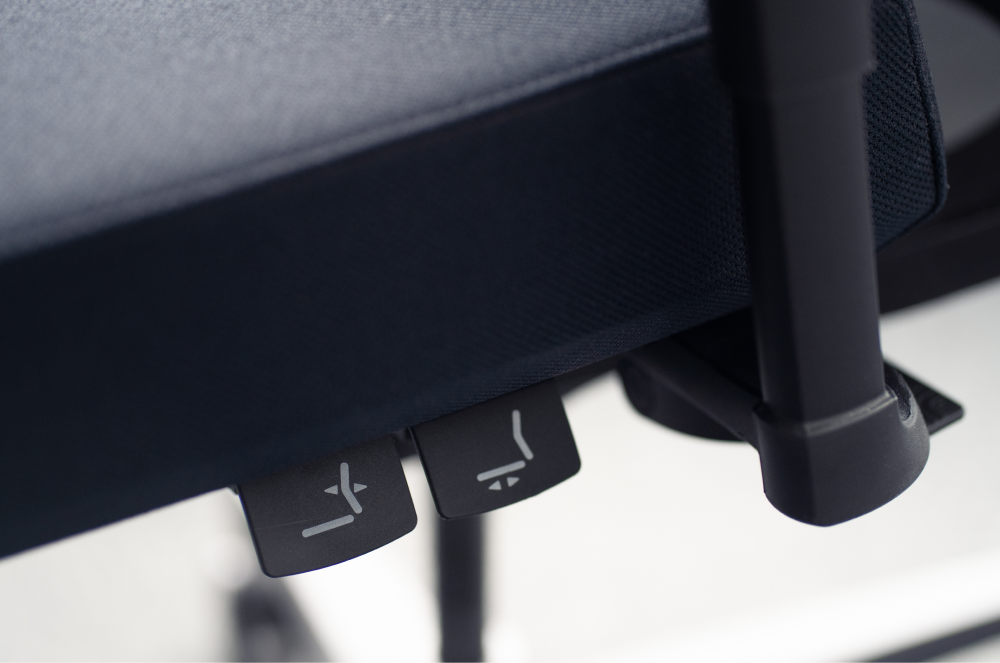How to adjust your office chair?
Are you aware of your working posture? Are you sitting upright or hunched over? Do you have your legs stretched out, crossed, or are your feet firmly side by side on the floor? It is not natural for everyone to adopt a good sitting posture. Sometimes you have to get used to it. But if you have adjusted your office chair properly, it will be easier to adopt the right sitting position. We will gladly give you a hand with adopting an ergonomic sitting posture.
A good work ethic is healthy
Why adopt good working posture if you don’t suffer from complaints? Simple: you do that to prevent you from getting complaints! Have you adjusted your workplace properly because prevention is better than cure… The aim of ergonomic design is to reduce the risk of injury and illness due to physical and mental strain on the body. As a result, employees feel more comfortable and less tired. A properly adjusted office chair contributes to a healthy workplace. Back complaints often occur when you have been sitting incorrectly for a long time. So avoid slumped, twisted or hunched positions at your desk.
A painful and stiff feeling in your neck and shoulders can be caused by continuously (slightly) raising your shoulders. The muscles are constantly active and don’t get a chance to recover. Resting your arms regularly and not bending your head forward too much and for too long can prevent these complaints. With an ergonomic office chair, sitting is balanced. So choose a chair that is comfortable and has the right adjustment options.
What is a correct working attitude?
In een 24-uurs werkomgeving, zoals in een control room of een meldkamer, voer je je werkzaamheden vrijwel de hele dag aan en rondom je werkplek uit. Het is goed om de zithouding regelmatig af te wisselen met staan en even lopen naar bijvoorbeeld de printer, een collega of om drinken te halen. De houding waarin je zit is mede afhankelijk van de werkzaamheden die je uitvoert. We distinguish three correct working postures while sitting:
- Reading or writing posture: the line of vision is downwards, towards the documents in front of you on the desktop. Your arms rest on the desktop and on the armrests of the desk chair. Your feet place flat on the floor, and your lower and upper legs are at a 90-degree angle.
- Computer work: adjust the height of your monitors so that you can see just over the edge of the screen. The most important information can be seen centrally on the screen. As a result, your viewing angle is slightly downward.
- Observing multiple screens: when observing multiple screens, you have an upward viewing angle. The headrest of your office chair provides support for the neck here.
Adjust your office chair properly
During the day, several colleagues sit on the same chair during different shifts. Each height and posture requires a different setting of the office chair. Chances are that the colleague who used the chair before you will adjust it differently from you. It is therefore important to adjust the chair properly at the start of your shift. The rule of thumb is: a good office chair is half the battle, the other half is adjusting the chair correctly. Here are some tips on how to adjust the chair properly:
- Determine the right sitting height by placing your feet flat side by side on the floor. Make sure your upper and lower legs are at a 90-degree angle. With the right seat depth, a hand width fits between the seat and the hollow of your knee;
- The backrest should also be adjusted properly. Sit as far back as possible and straighten the backrest so that the convex part of the backrest (the lumbar support) sits snugly against your lower back. The backrest should move with you in any position without you having to exert force on it;
- Your arms and shoulders also need proper support. Relax your shoulders when you rest your arms on the armrests. So do not assume a posture with your shoulders raised The lower and upper arms together make a 90-degree angle. Place the armrests against the underside of your elbow, at the same height as your desktop;
- The headrest of the office chair provides support for your head. To determine the correct height of the headrest, sit up straight. Place the support against the hollow of your skull, at the level of the upper cervical vertebrae. When doing so, the headrest should not push against your head;
- Finally, adjust your body to your workstation so that your belly touches the edge of the desk.
Looking for a new office chair or have any questions? Then get in touch for free advice!




